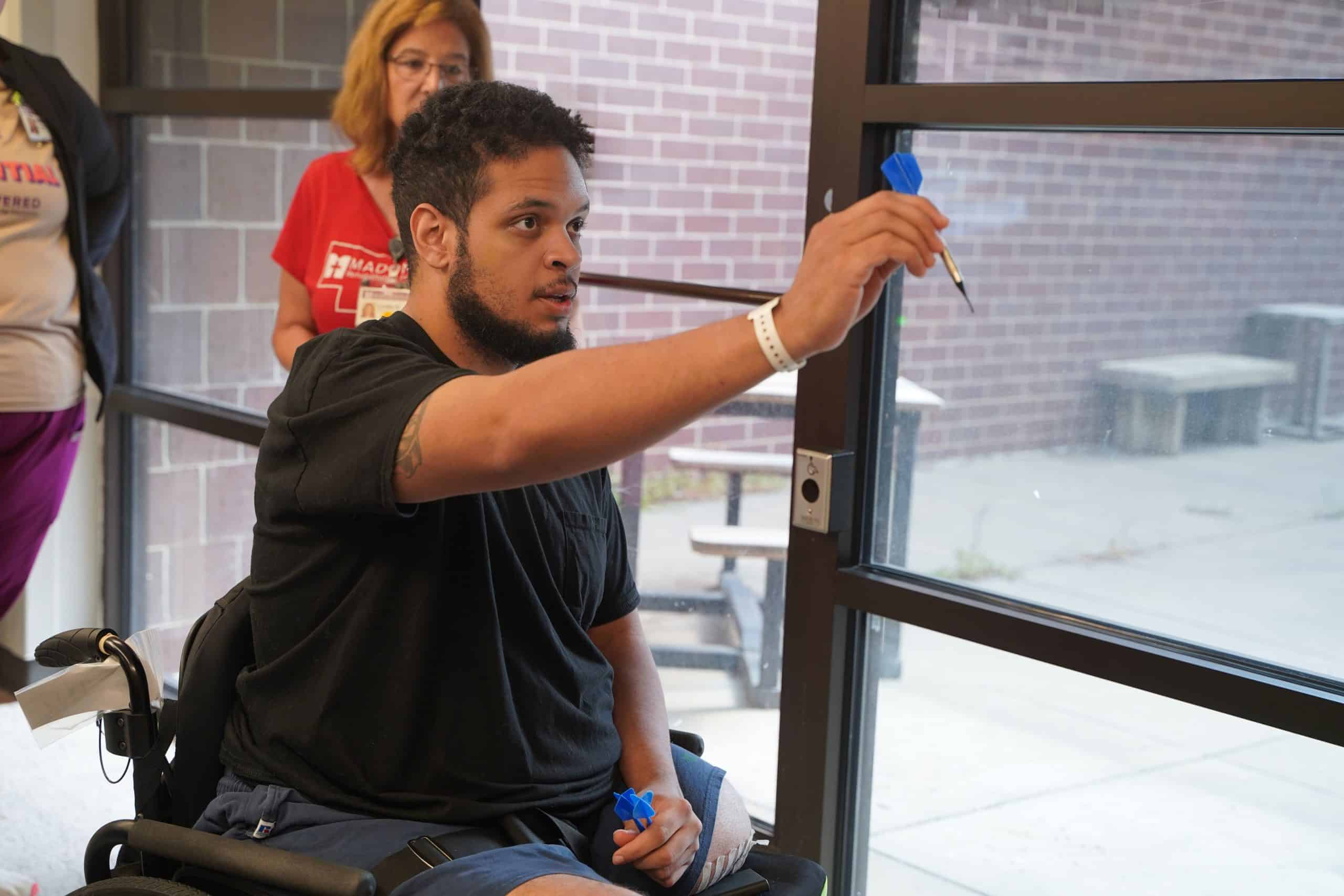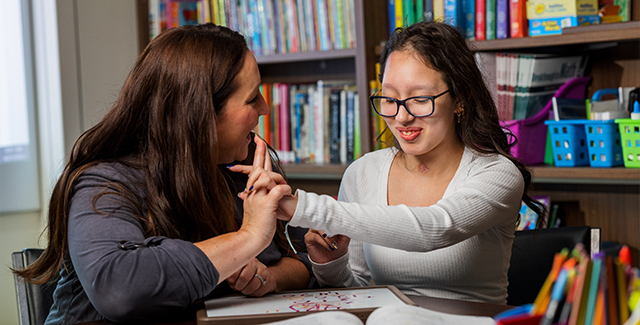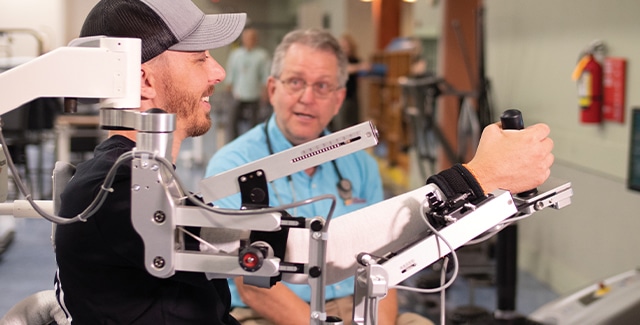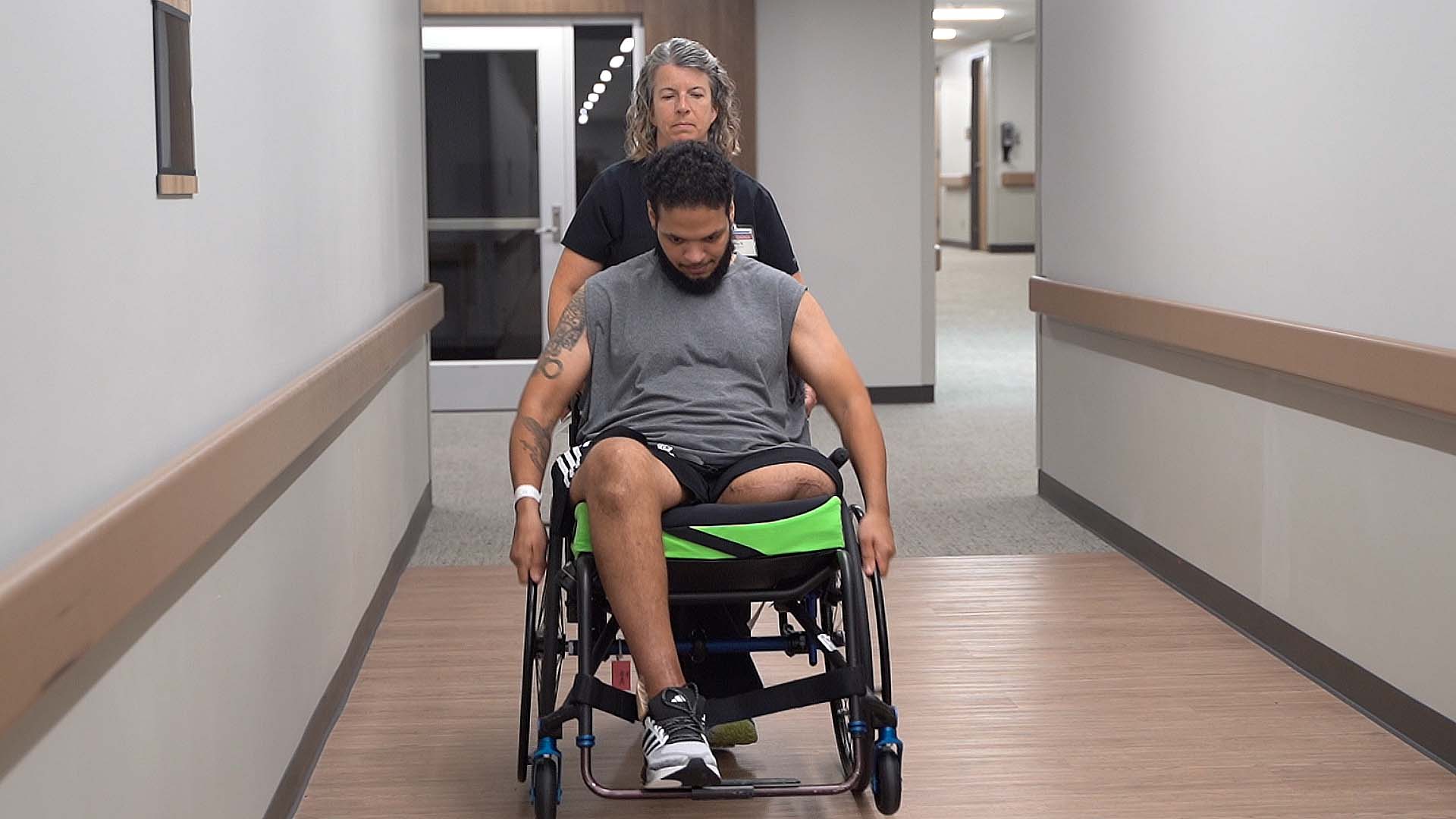“You fly too close to the sun, eventually, you get burned.”
For years, Kyle Breiner thrived on adrenaline. As a U.S. Navy veteran working with explosives on aircraft carriers, danger didn’t faze him — it fueled him.
“I had a little bit of a wild side,” Kyle said. “If I’m going to do something dangerous, I’m going to do it as safely as possible, but I kind of lived a little on the edge.”
But on June 4, a high-speed motorcycle crash pushed him past that edge and into a life-changing journey.
Kyle was fully conscious during the accident.
“I remember going off the road, riding the bike through the ditch, maybe 20 or 50 feet, and then I got thrown,” Kyle said. “I tumbled, hit the ground, and started doing my body checks. I couldn’t really move my legs or feel anything.”
The crash left Kyle with a spinal cord injury. Compounding the trauma, he also sustained multiple fractures, including both ankles, and additional medical complications ultimately led to an above-the-knee amputation.
“I wasn’t in the best of shape,” Kyle said. “I had lost a lot of blood.”
He was initially treated at MercyOne Des Moines Medical Center before coming to Madonna’s Specialty Hospital, where he faced not only a life-altering physical reality but also the complex challenge of healing both internally and externally.
“I’ve been here 22 years,” Kathy Sievers, PT, NCS, a Madonna physical therapist said. “I’ve seen a lot of spinal cord injuries and a lot of amputations — but not a lot of both together. As a clinician, I had to combine my knowledge of the two to challenge him appropriately.”
Early on, Kyle’s care team focused on how to move him safely, using custom lift sling positioning and safe patient handling strategies tailored to his body’s unique needs.
“We had to teach new strategies to manage his spinal cord injury while also protecting skin integrity, especially on the residual limb, since he couldn’t move himself yet,” Cool said. “It took a lot of collaboration across the medical teams.”
Because of weight-bearing restrictions, his care team began at the wheelchair level, starting with basics like core control, balance, and pain management.
“As we got weight bearing, we were able to move into slide board transfers and help him find ways to move a body that no longer functioned the way it used to,” Amanda Cool, MS OTR/L, a Madonna occupational therapist said.
Even in those early, difficult days, Kyle approached recovery with a calm, focused resolve.
“He just knew that’s what he needed to do,” Sievers said. “He was very matter of fact: ‘I’m going to learn how to live this way and deal with having a spinal cord injury and amputation. Life goes on, and I’m ready to get back to it.’”
His military background gave him the structure and mindset to take on each challenge head-on — even when it pushed him to his limits.
“We’d ask him to do something, and he’d look at us like we were crazy,” Sievers said. “But then he’d say, ‘Okay, let’s do it.’”
Transitioning to Madonna’s Rehabilitation Hospital, Kyle stayed focused on the process.
“It was pretty frustrating at first to fail at simple tasks,” Kyle said. “But as my strength improved, it really helped my confidence. I knew my arms were my new legs.”
With the unwavering support of his mom, family, and a clinical team that understood the complexity of his dual diagnosis, Kyle accepted what had happened — and committed to moving forward.
“Life over limb,” Kyle said. “Better to lose the leg than to lose your life.”
Over time, small victories turned into major milestones. Once driven by risk, Kyle now pursues progress with the same resilience that has always defined him.
“Try to be appreciative of the smallest things you have,” Kyle reflected. “Every little thing is now a gift after something like this has happened.”
A Navy Veteran’s Mission to Rebuild After Trauma






